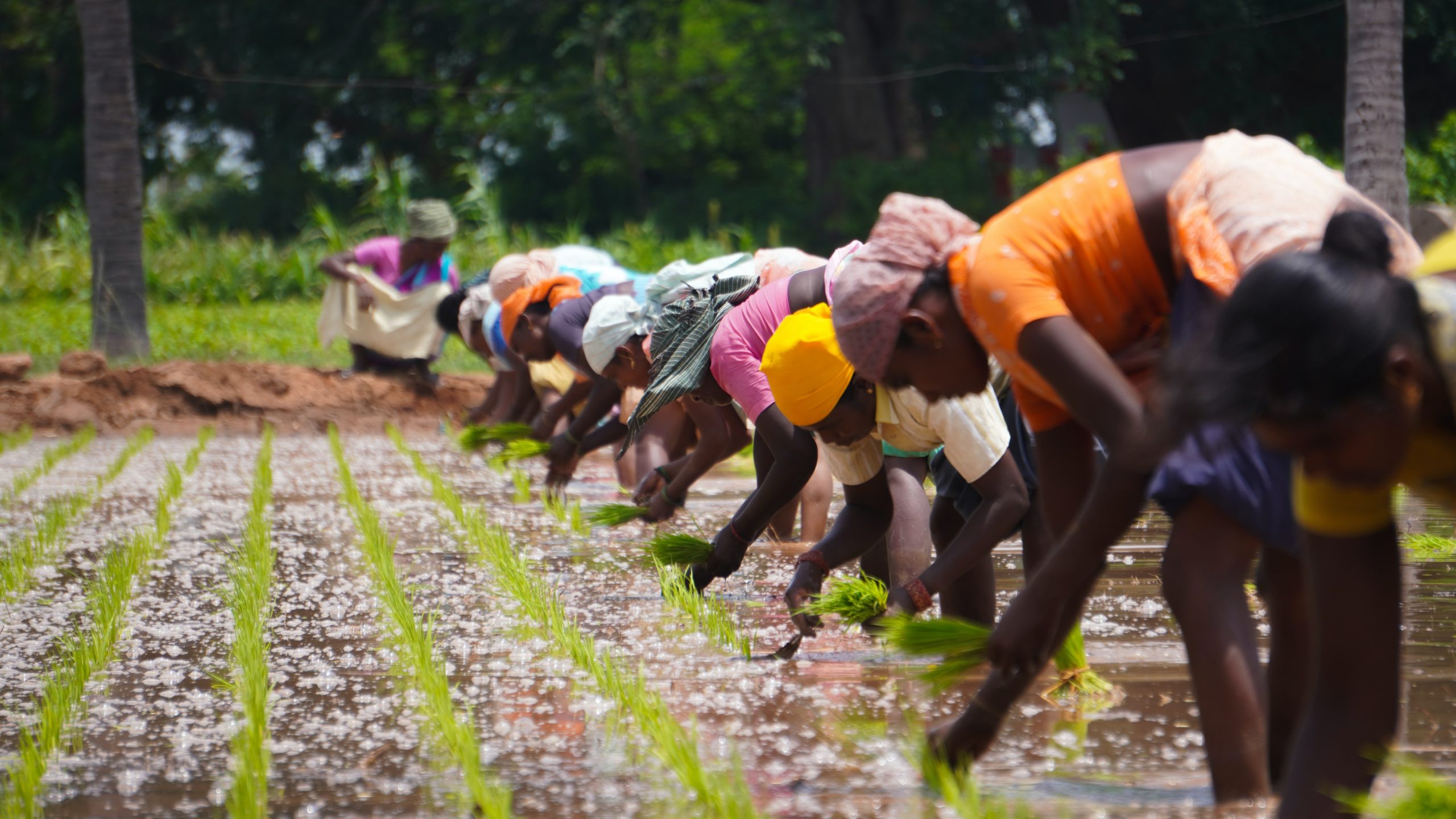This is how agriculture can transform with climate adaptation
Agricultural approaches that rely on new information and technology are the way forward for farmers worldwide to be able to adapt to climate change.
I
n India, as in many countries where agriculture is key, farmers are facing serious challenges from climate change. New climatic conditions are undermining the livelihoods of millions of farmers in India, raising doubts about whether farmers can continue to grow the same crops they are currently producing. Small changes won’t do. These farmers need new options, information and technology to help them transform how they farm to survive in a changing climate.
This kind of transformation is being powered by enhanced climate services – defined as systems to develop and provide climate information to help farmers make more climate-informed decisions – and improved crop research and development, aiding Indian farmers as they begin to shift from water-intensive crops like maize to drought- and heat-tolerant varieties of millet, a traditional crop that had dropped out of favor in recent decades.
The transformation began with data: 40 years of weather and climate information in India showed that while total rainfall has remained consistent, the number of rainy days had declined and the monsoon onset was often delayed, leading to lower rice and maize yields. Combining this data with long-term climate projections indicated areas where the cultivation of millet was likely to be more successful as the climate continues to change. Farmers were encouraged to revive millet production in these areas and plant later, among other changes — and their yields improved.

New research led Indian farmers to switch to millet for larger yields. Photo byMartin LaBar on Flickr.
Global Transformative Adaptation
As in India, some farming communities around the world are expected to face devastating food insecurity by 2050, especially in low-income countries where natural resource degradation, poverty, urbanization and other development challenges amplify the impacts of climate change. In the face of more frequent extreme weather events, shifting temperatures and rainfall patterns, and more pests and diseases, incremental changes to preserve existing crops and agricultural practices will not be enough.
Instead, transformative approaches to adaptation will be necessary to ensure that crop and livestock production remains viable. Transformative adaptation recognizes that in climate change hotspots, fundamental aspects of agricultural systems, such as how, where and what types of food are produced, will have to change.
Climate services and research and development drive transformative adaptation
In two new papers, WRI researchers explore how two key areas of research must change to better enable transformative adaptation: crop research and development (R&D) and climate services. Examples of climate services include online platforms, software programs, and modeling systems for analyzing and sharing climate data to meet users’ needs.
Systemic shifts in agriculture require that long-term climate projections and targeted climate data be included in adaptation and investment plans. However, researchers found that few such plans and strategies include the need to improve climate services to support building long-term resilience.
According to this research, climate services should be enhanced in three ways. First, climate services for agricultural adaptation must be broadened from the current focus on daily and seasonal forecasts to look at decadal and longer-term planning out to 2050. Second, climate services must expand to account for biological, environmental, and social and economic factors that may affect agricultural planning. Third, adaptation planners, policymakers, funders, and other stakeholders that use climate services should be given access to tailored solutions that meet their needs, along with additional tools, guidance and capacity to help them incorporate climate services into their work.
WRI researchers also found that climate change is already affecting and even undermining certain crop and livestock systems and urged greater investment in localized analysis of crop viability and options for new crops.
Around the world, governments, climate adaptation funders, and the private sector must invest more in the kind of crop R&D needed to develop and disseminate either new crop varieties, or new alternatives. This can be done by improving basic R&D capacity, decreasing breeding times, enhancing gene banks and data systems, and expanding the range and genetic diversity of crops researched.

Investment in crop research and development helps to find better practices for climate resilient crops. Photo by Deepak kumar on Unsplash.
Importantly, researchers say investments in R&D must be matched by investments in helping farmers adopt new climate-resilient crop varieties and species, particularly among those at high risk with limited resources. For example, farmers in India where saltwater is intruding into rice paddies are taking part in research trials to develop more salt-tolerant rice varieties. In Ethiopia, farmers are involved in participatory plant breeding for climate resilience — an emerging approach that involves farmers in defining breeding goals and priorities, research design and commercialization, and in carrying out key steps of the plant breeding process. Through participatory breeding, farmers can improve the ways in which seeds are saved and shared locally, helping disseminate newly developed crops within their local networks.
The switch to millet in India illustrates how enhanced climate services and crop R&D, along with better access to seeds and information, can drive transformative adaptation. Gathering data was vital, but only the beginning. The Indian government, in partnership with NGOs, delivered a set of interventions that enabled farmers to transform their production of maize, which had become unsuitable in hotter, drier conditions, to more resilient millet production. These included distributing traditional drought-tolerant varieties of millet, instituting incentives to encourage planting, and supplying farmers with daily and seasonal weather information to help increase production. India’s millet farmers are proof that new information, technologies, and practices combined with concentrated efforts to engage agricultural communities can generate successful climate adaptation to build long-term resilience.
The ideas presented in this article aim to inspire adaptation action – they are the views of the author and do not necessarily reflect those of the Global Center on Adaptation.